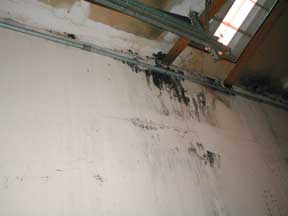|
MOLD
Mold contamination has
been identified as a major contributor to building-related illness and
poor indoor air quality. Without proper mitigation of water losses,
mold can start to grow rapidly, within 48 hours. Where sewage
backflows into a building, the amplification of mold growth is even
greater and faster, unless properly mitigate d and remediate. Some
molds are known to be allergenic, pathogenic or toxigenic. d and remediate. Some
molds are known to be allergenic, pathogenic or toxigenic.
For mold remediation projects,
IMPACT can provide the following onsite services:
○ Identify the extent and
severity of mold contamination.
○ Supervise and/or monitor
decontamination procedures.
○ Perform clearance testing
to confirm that remediation was successfully completed.
These may
include use of the Anderson N-6, spore trap, Rodac, and wipe and bulk.


Air Contaminant IAQ Sampling
Evaluations:
IMPACT has performed
customized IAQ sampling evaluations for a variety of air contaminants,
including volatile organic compounds (VOCs) emitted from construction
materials, office furnishings, and process operations. Determining the
source and addressing engineering controls.
Mold Sampling Evaluations:
IMPACT has conducted
mold investigations at industrial, health care, office buildings
and residences. Microbial contamination can result in building
occupant respiratory illness and infection. IMPACT's staff examines
special microbial sources, such as water spray systems, humidifiers,
porous insulation in HVAC systems, and water-damaged occupied spaces.
We conduct indoor and outdoor sampling of these sources using a
variety of sophisticated instrumentation to determine the species and
concentration of airborne fungi and bacteria. Based on the
investigation results, our staff develops remediation protocol to
eliminate microbial contamination.
|